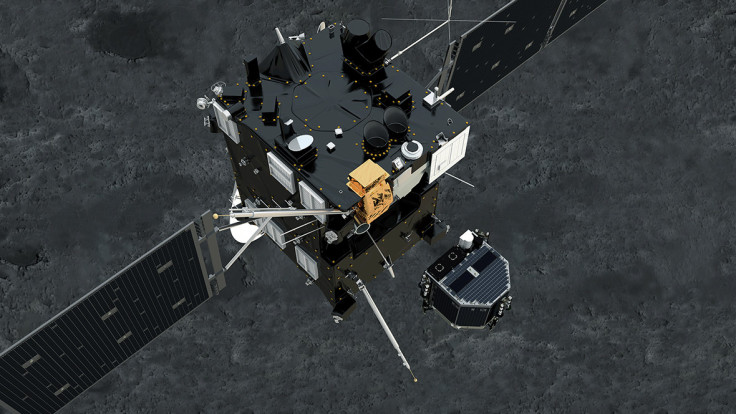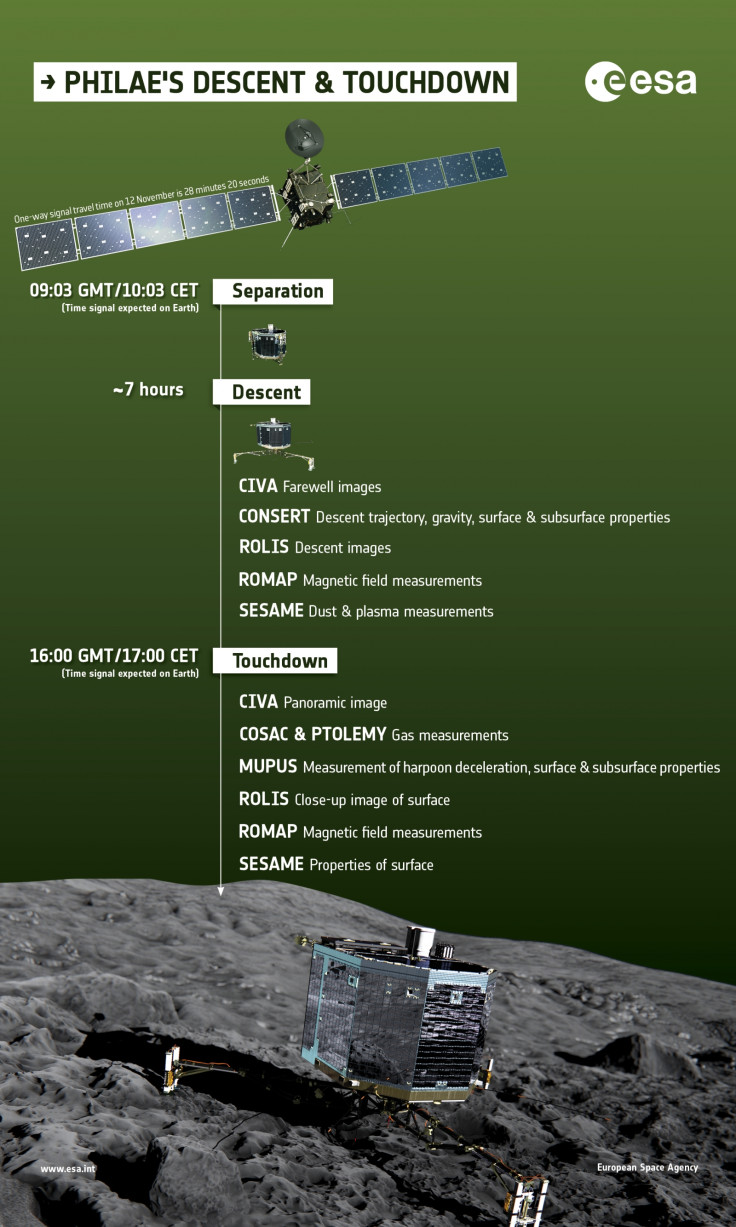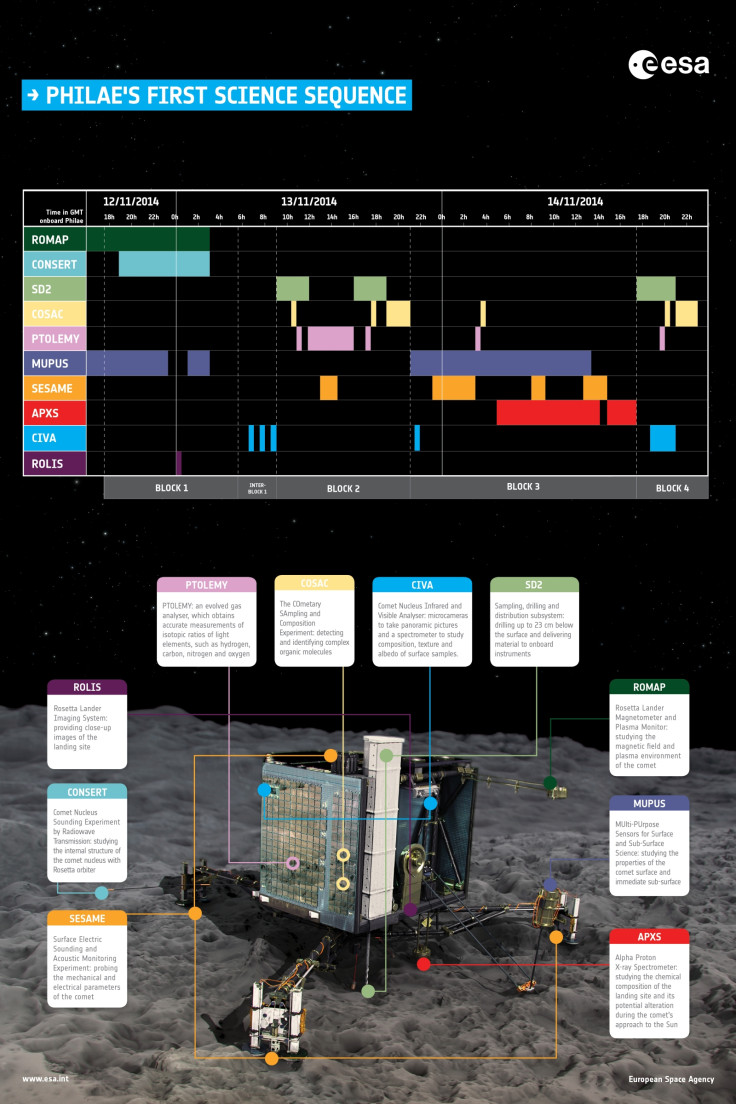Rosetta Mission: Timeline of Events Planned for ESA's Philae Comet Landing

The European Space Agency is getting set to try and land a spacecraft on a comet for the first time in history.
The ESA first announced the Rosetta Mission in 2004 and over the last year has gained considerable attention worldwide.
Marking the event tomorrow, the ESA is to broadcast a live stream of the landing of the Philae probe, due to begin tonight (11 November), which can be accessed here.
The Agilkia landing site, named after an island on the Nile River in the south of Egypt, covers an area of about one square kilometer and is the least hazardous terrain of all the sites considered.
Timeline of events

On 12 November, Rosetta will release Philae from an altitude of 22.5km from the centre of the comet at 8.35am GMT. Experts will confirm Rosetta and Philae are on the correct orbit so it can achieve the right trajectory to land on the surface as planned.
The Flight Dynamics team will have prepared the final instructions to Rosetta and they will verify the "overall health" of the spacecraft. By this time, the team will have processed the results of the orbit and generated the telecommands that will control their delivery. If these are not available, the lander delivery cannot go on. A final check and verification of the Philae's health will then take place.
Rosetta will perform the final pre-delivery manoeuver of the lander, which will take about six minutes and will place the pair on the correct delivery trajectory. At this stage, the thruster burn must be done at the right time in order to provide the right amount of push.
If anything goes wrong here, Rosetta might not release and Philae at the right point, meaning it could end up in the wrong place.
At this point, the team will make a final decision on separation, after which there is no way for Philae to return to Rosetta.
After its release, signals confirming deployment will arrive about 28 minutes later. Any incorrect performance during the above steps could affect Philae's journey to the comet, its descent and touch-down. It will take several hours to descend to the comet.
The first signals from Philae will show ESA that there is a successful communication link during the descent and the lander will start transmitting updates on its status and health.
In the final stage of landing, the lander will send a signal to confirm it has landed on the comet. Anchoring operations will then begin. Because of the comet's extremely low gravity, the landing gear will absorb the small forces of landing. Ice screws in the probe's feet and harpoon system will lock Philae to the surface. A thruster above will push it down.
An in-depth timeline of events can be found here.
What next for Philae?
As long as the landing is successful, Philae will begin its operations on the comet surface. The ESA produced a poster explaining what experiments the lander will be undertaking during the first 2.5 days on the surface of the comet.
One of the instruments on board was created by scientists at the Open University. Ian Wright, Professor of Planetary Science and head of the Rosetta team, created a video to show what will happen after touch down.
The sequence of experiments is divided up into blocks to allow Philae to be moved before performing the next task. The battery lasts about 65 hours, but if solar power is available to recharge the secondary battery, then more experiments can be carried out. The ESA says this phase could last until March next year.

© Copyright IBTimes 2025. All rights reserved.






















